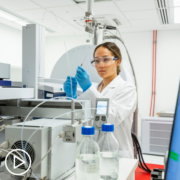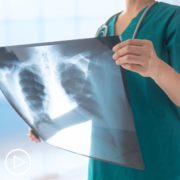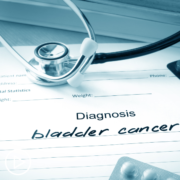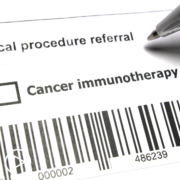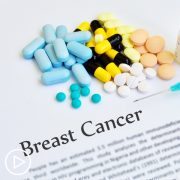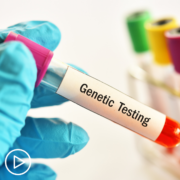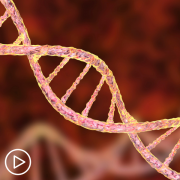Breast Cancer Treatment Side Effects | What Are They and How Are They Managed?
Breast Cancer Treatment Side Effects | What Are They and How Are They
Managed? from Patient Empowerment Network on Vimeo.
What should breast cancer patients know about treatment side effects? Expert Dr. Bhuvaneswari Ramaswamy shares common treatment side effects and explains her perspective on how to manage specific side effects for improved quality of life.
Dr. Bhuvaneswari Ramaswamy is the Section Chief of Breast Medical Oncology and the Director of the Medical Oncology Fellowship Program in Breast Cancer at The Ohio State College of Medicine. Learn more about this expert here.
See More from Thrive Breast Cancer
Related Resources:
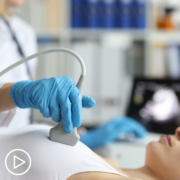
|
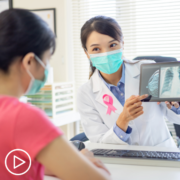
|
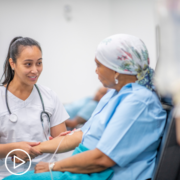
|
Transcript:
Katherine:
Dr. Ramaswamy, along with treatment can also come side effects. What are some common side effects of breast cancer treatment?
Dr. Ramaswamy:
Yeah, great question. Again, an important question for you all to consider. So, let’s divide our treatment to targeted therapy and chemotherapy. The targeted therapy could be the estrogen receptors and then the HER2 because the HER2, again, remember that biomarker. And then the chemotherapy that any patient with breast cancer could get, including, of course, the triple-negative. And then we’ll touch base a little bit later on with the immunotherapy. So, when we look at the targeted therapy with estrogen receptor, anti-estrogen receptors, of course, it’s like putting you into menopause again. It’s like so you could have hot flashes, you could have some emotional liability and you could have vaginal dryness and sexual libido could be lower.
And also you could have joint aches and pains and your bone density could go down and cause osteopenia and osteoporosis and fractures. So, those are some of the – and we can address all of those that we’ll come to later. With the HER2-targeted therapies, one of the main things will be the heart. These can affect the heart because there are some receptors that are present there that these HER2 therapies can affect the myocardial function. So, they don’t cause increase in heart attacks, but just the pumping action of your heart could go down. We keep checking your heart function to help with that. And then with the chemotherapies, other than your blood counts going down, these are acute events. Those blood counts could go down, which could put you at higher risk for infections. Again, some of the heart chemotherapies can affect the heart. So, we’ll keep an eye on that.
And, of course, fatigue that comes with all of these treatments that can happen. But some of those chronic things that can happen is also neuropathy. So, tingling, numbness in your hands and feet, even sometimes pain in your hands and feet. And then this can stay on for a little bit longer and can cause some trouble buttoning your shirt or playing the piano or putting your earrings. So, it can affect your daily quality of life and cause pain. The other important thing, which we do have now an option is also hair loss. I know that is something hard for age. It’s so hard for women to lose hair and the consequence of being identified differently and not having that – when you look at the mirror, it’s a constant reminder.
So, we do have something called a scalp cooling that you could take an option and discuss with your doctors whether that how helpful that’ll be for your type of chemotherapy and whether you could use it and you can – but 60 percent of the time not lose all your hair and need a wig. So, that is something that you can address. So, broadly, these are the issues that can happen. Again, this is very broad. Depending on your treatment, you still need to talk to your doctors.
Katherine:
How can some of these side effects be managed?
Dr. Ramaswamy:
So, the key thing is to be first thing that I want to advise all our patients is that be vocal about your side effects. Okay? Sometimes we all think, okay, they did tell me I’m supposed to have all the side effects. I just need to keep quiet about it. That’s not what is important. And I think I did miss mentioning the GI tract changes like nausea, vomiting, or diarrhea. Again you think, oh, this is our part of all chemotherapy, I just need to keep quiet. No, that’s not the case because we actually give you anti-nausea medications before the chemotherapy. So, if it’s not effective, you need to have to tell your doctors, “Okay, this time I had a couple of sensations of nausea, but no vomiting.”
Or “No, I was vomiting a lot.” Whatever it is. Even if you had just nausea, it’s important to tell your doctors. If it’s diarrhea, you need to tell them. We do give you some medications, but if it’s not working, you need to tell them. And again, we always underplay the issues with sexual side effects because you don’t want to talk about that. I mean, it’s not important. No, it is important.
It’s important for your intimacy, it’s important for your life, and it’s important for you to speak because there are supportive care therapies that we can provide. Neuropathy, again, I think your doctors will always ask you, but being vocal about it, being honest about it, and talking about it is important. So, again, fatigue.
They are going talk to you about exercise, because exercise does overcome that fatigue. But if you’re not able to do it again, it’s honest to say, “No, but I didn’t do what you said last time.” So don’t feel bad about it. And there could be other ways we can improve your fatigue too. So, again, sharing those side effects is important and we can. We can address all of these side effects. Now, I’m not saying the minute we address these side effects it’s all going to go away completely, but they can get better. And it’s important for you to talk about it and get those supportive care measures.


